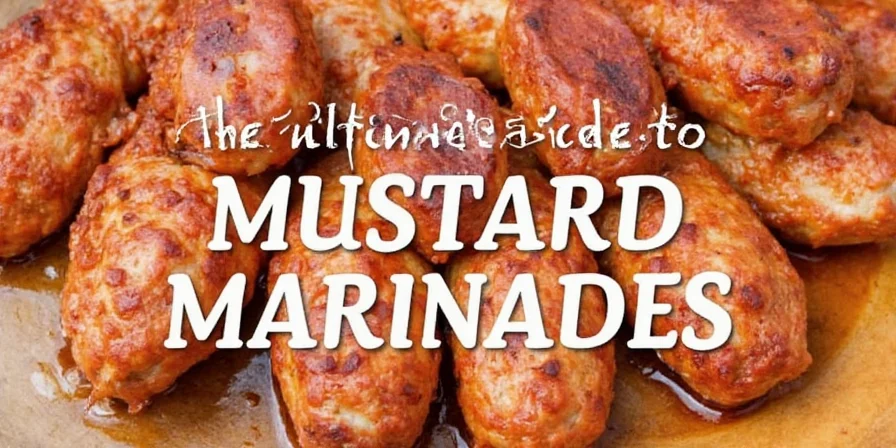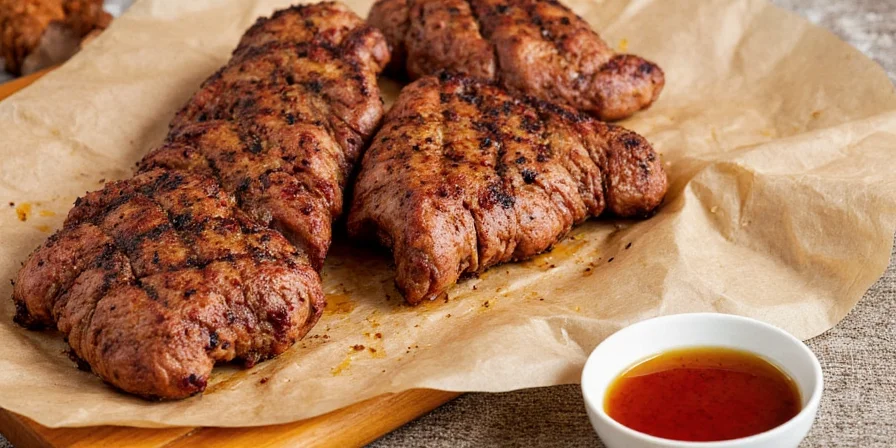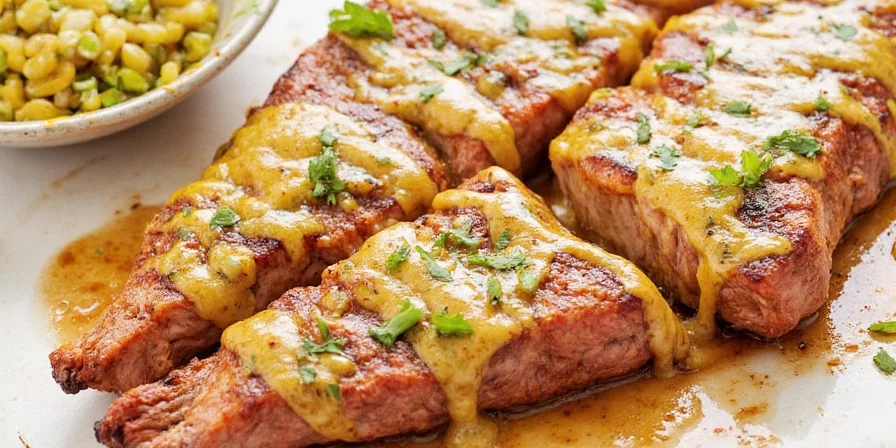The Ultimate Guide to Mustard Marinades: Spicy Secrets for Flavorful Meats
Table of Contents
- Introduction: Why Mustard Marinade is a Game-Changer
- Types of Mustard and Their Impact on Marinades
- How to Make the Perfect Mustard Marinade: Step-by-Step
- Pros and Cons of Using Mustard as a Marinade Base
- Best Meat Pairings with Mustard Marinades
- Pro Tips and Flavor-Enhancing Secrets
- Mustard Comparison Table
- Visual Guide: Mustard Marinade in Action
- Conclusion: Spice Up Your Grilling Game
Introduction: Why Mustard Marinade is a Game-Changer
When you think about marinades, your mind probably jumps straight to soy sauce, olive oil, or citrus. But what if we told you that mustard—yes, that tangy condiment you use on sandwiches—could be your secret weapon in flavor town?
Mustard marinades offer a unique blend of acidity, spice, and emulsifying power. Whether you're grilling up ribs, searing a pork chop, or prepping a chicken breast, a mustard-based marinade can take your dish from “meh” to “magnifique!”
Types of Mustard and Their Impact on Marinades
Not all mustards are created equal—and choosing the right one can make or break your marinade. Here’s a quick breakdown:
- Yellow Mustard: Mild, slightly sweet, perfect for lighter marinades.
- Dijon Mustard: Tangy and punchy, ideal for bold flavors and thicker consistency.
- Brown Mustard: Earthier with a bit more heat; great for deeper, smokier profiles.
- Spicy Brown Mustard: Zesty and coarse, best for aggressive marinating styles.
- Honey Mustard: Sweet-meets-tangy combo, fantastic for chicken or pork.
Your choice of mustard will influence the overall flavor profile, texture, and even how well it clings to the meat.
How to Make the Perfect Mustard Marinade: Step-by-Step
Ready to get saucy? Here’s a simple yet powerful formula to create a killer mustard marinade:
- Base: Start with 1/4 cup of mustard (your preferred type).
- Liquid Element: Add 2 tablespoons of vinegar, citrus juice, or wine to balance out the richness.
- Fat: Stir in 2 tablespoons of olive oil or melted butter to keep things juicy.
- Flavor Boosters: Garlic, herbs (like thyme or rosemary), smoked paprika, honey, or even beer.
- Salt & Pepper: Don’t skip these! They’re essential for seasoning.
Mix everything together, slather it over your protein, and let it rest in the fridge for at least 30 minutes—or better yet, overnight!

Pros and Cons of Using Mustard as a Marinade Base
Let’s talk truth bombs: every marinade base has its strengths and weaknesses. Here's how mustard stacks up:
| Pros | Cons |
|---|---|
| Great emulsifier — holds onto spices and oils | Can overpower delicate meats if not balanced |
| Natural tenderizing properties due to acidity | Some varieties can be too thick without dilution |
| Adds depth and complexity without being overly heavy | May not appeal to kids or mustard-haters |
Overall, mustard is a workhorse ingredient when used thoughtfully.
Best Meat Pairings with Mustard Marinades
Here’s a cheat sheet for matching your mustard marinade with the right cut:
- Pork Chops: Dijon + garlic + apple cider = dream team
- Beef Ribs: Spicy brown mustard + smoked paprika + Worcestershire = fall-off-the-bone deliciousness
- Chicken Thighs: Honey mustard + lemon zest + chili flakes = juicy and vibrant
- Lamb Chops: Whole grain mustard + rosemary + olive oil = rich and herbaceous
- Salmon Fillets: Dijon + dill + lemon = tangy and refreshing
Pro Tips and Flavor-Enhancing Secrets
If you want to really level up your mustard game, try these pro moves:
- Layer the Flavors: Apply half the marinade before cooking, then brush on the rest during the last few minutes.
- Add Some Heat: A dash of cayenne or hot sauce can elevate the spiciness without stealing the show.
- Caramelization Hack: Sear your marinated meat first to lock in flavors and get that golden crust.
- Rest It Right: Always let your meat rest after cooking—it lets juices redistribute and enhances flavor retention.
- Make Ahead: The longer the marinade sits, the more complex the flavor becomes (up to 24 hours is ideal).
Mustard Comparison Table
| Type | Flavor Profile | Texture | Best For |
|---|---|---|---|
| Yellow | Mild, sweetish | Thin, runny | Light marinades, burgers |
| Dijon | Sharp, tangy | Smooth, thick | Steaks, chicken, sauces |
| Brown | Earthy, spicy | Coarse, rustic | Pork, lamb, root vegetables |
| Spicy Brown | Fiery, zesty | Chunky, robust | Ribs, grilled veggies |
| Honey | Sweet-tangy combo | Thick, sticky | Glazed meats, wings |
Visual Guide: Mustard Marinade in Action
Conclusion: Spice Up Your Grilling Game
In the world of marinades, mustard often plays second fiddle—but don’t be fooled. With its bold flavor, binding power, and natural tenderizing qualities, mustard marinades deserve center stage.
So next time you’re firing up the grill or prepping dinner, reach for that jar of mustard and give your proteins the flavor boost they’ve been begging for. Trust us—you’ll never look at your condiment shelf the same way again!
Happy marinating!













 浙公网安备
33010002000092号
浙公网安备
33010002000092号 浙B2-20120091-4
浙B2-20120091-4